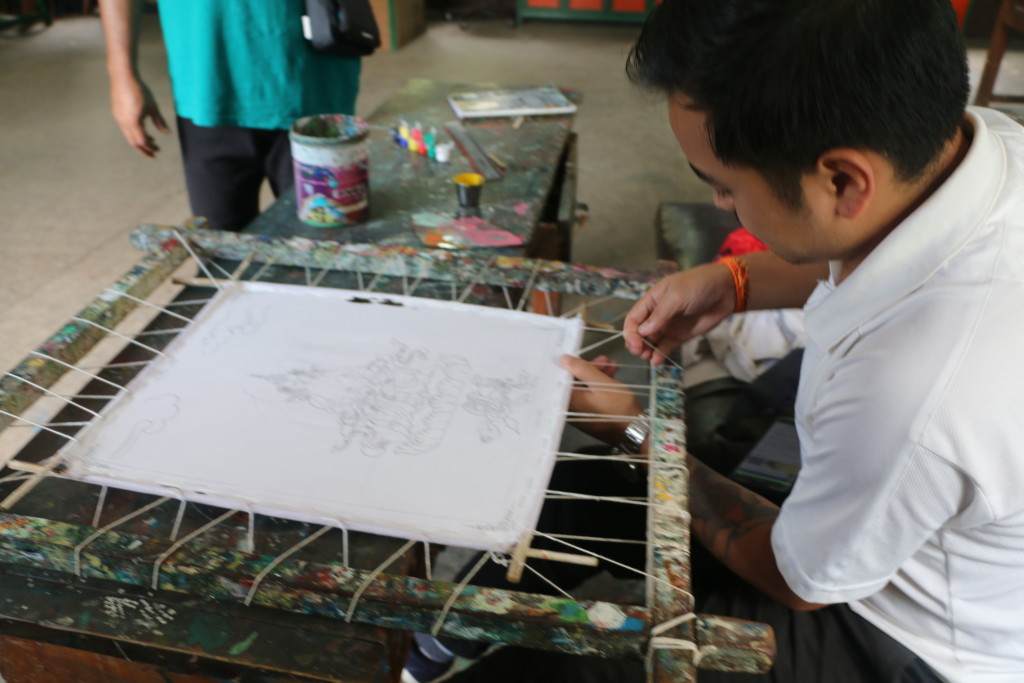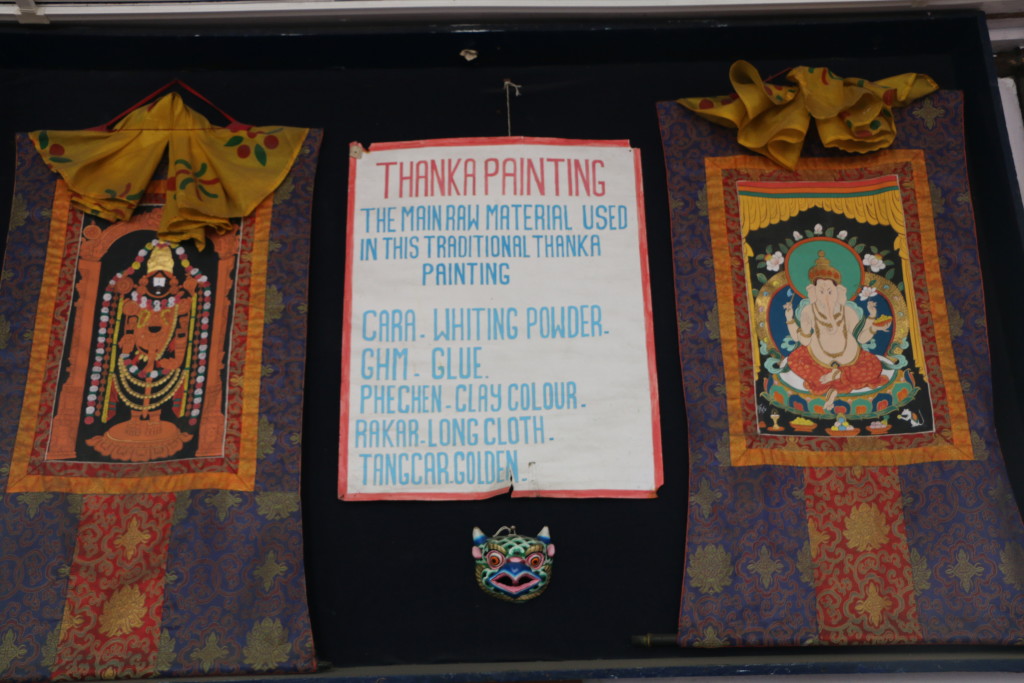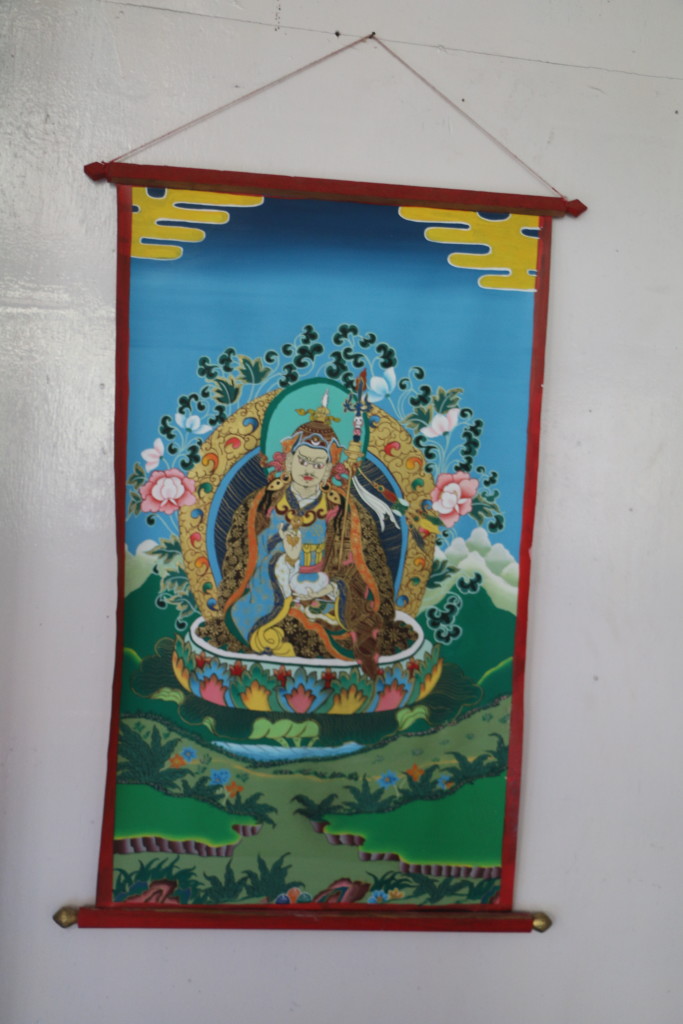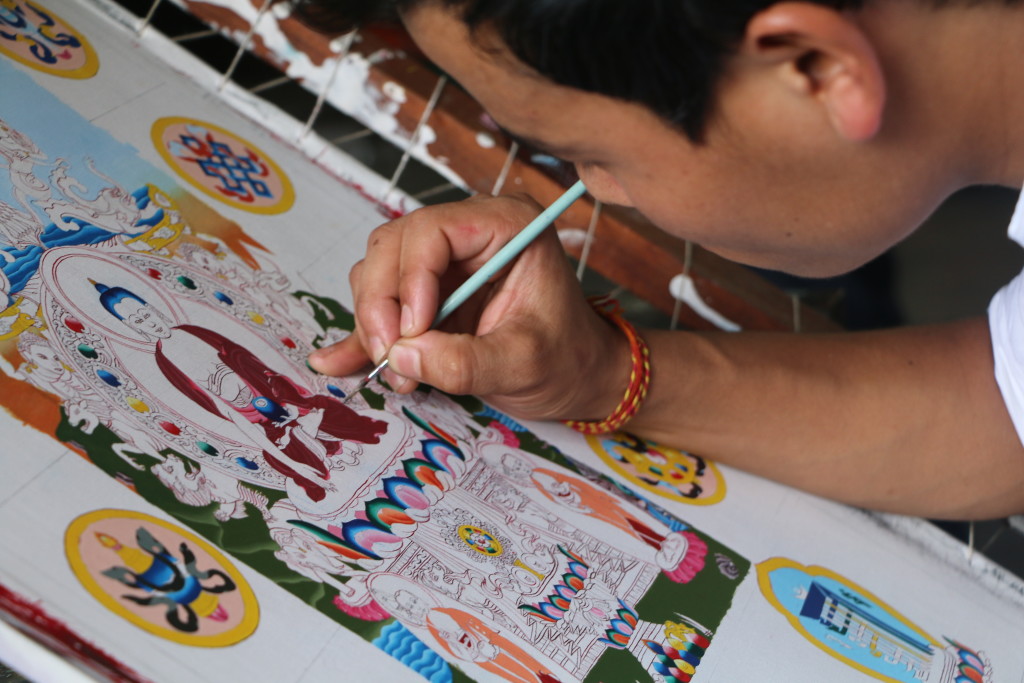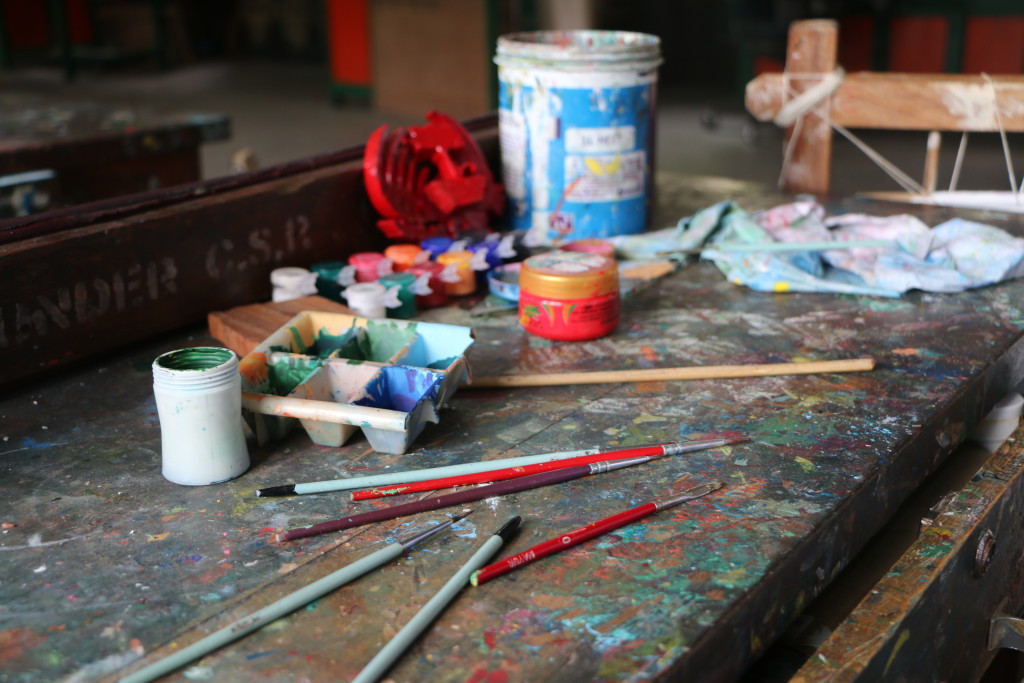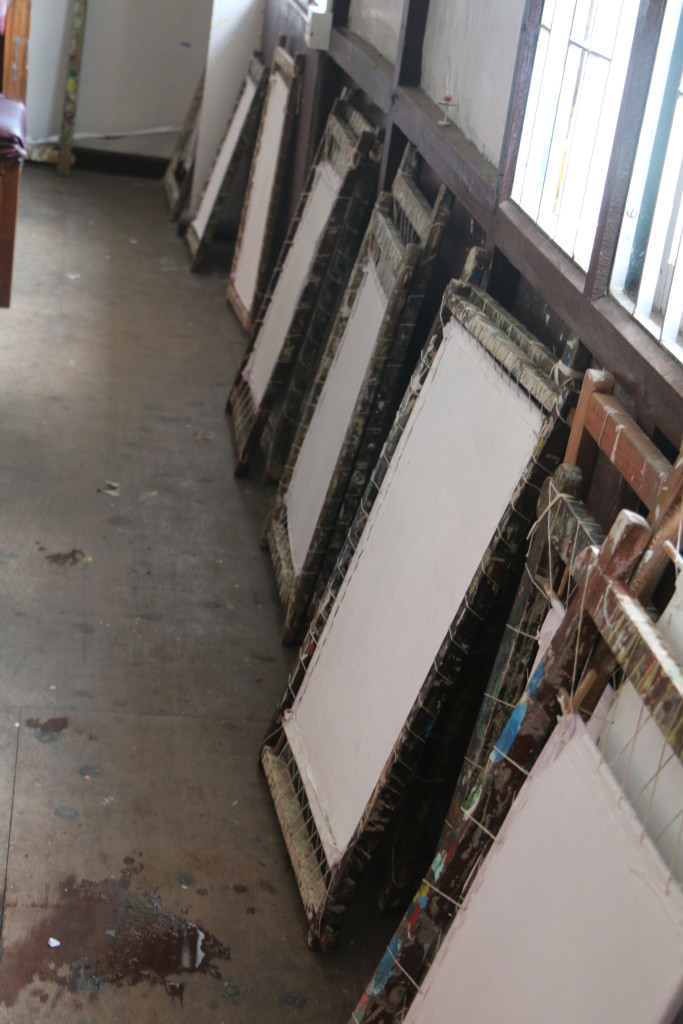SILKEN STROKES -Thangka Paintings Back
Thangka paintings occupy a special place in the tradition of art history with a difference. The artist seems to apply his or her own interpretation of thoughts, consciousness of locations or subjects with paintings as aids in meditational practices to develop a clear vision of a particular deity and forge a link with the vision. They were usually visions that appeared to great spiritual masters during meditation at moments of self realisation, then recorded and incorporated in Buddhist scriptures. Llamas would travel around the country carrying a large Thangka to illustrate their talks and convey the life of the Master. There were a sort of personal ‘road maps’ to guide them to the original insight of the Master.
This sacred art dates back to 7th century and originated in Nepal. Today aspiring Thangka artists study iconographic grids and proportions, using them to draw outlines in black on a canvas prepared with a mixture of chalk, gesso and base pigments that is then rubbed all over and the cloth is no longer apparent. Natural dyes made of minerals, vegetables are used. And pure gold is added last before the painting is framed in a precious brocaded border.
Commissioning a Thangka was considered a means of earning spiritual merit. One does not know if it applies to acquiring a high prices one as an aesthetically beautiful piece of art that graces the elegant sitting rooms today as part of one’s art collection!
Images from ICH team visit to the Directorate of Handicrafts & Handloom, Sikkim for the Compendium Project.
Images © ICH Division, INTACH





